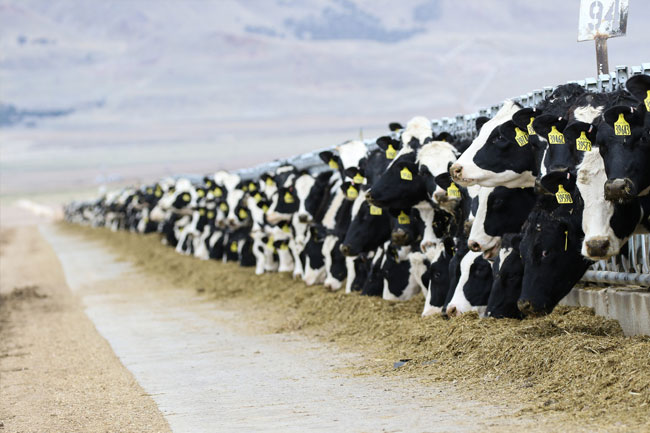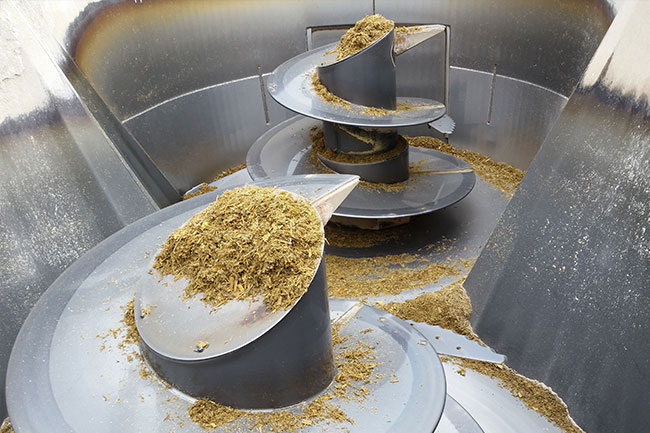Feeding Management
Dellait » Feeding Management
OVERVIEW
Since feed is the highest expense on dairy farms, the feeding program is a critical element for dairy’s financial success. Recent audits of feeding programs on dairies suggest that variability on nutrient composition of diets (total mixed rations; TMR) is a serious problem that may affect cow production performance and health.
In a survey of 22 Canadian dairy farms, the average TMR delivered in the feedbunk exceeded TMR formulation for energy (+0.05 Mcal NEL/kg), nonfiber carbohydrates (+1.2%), calcium (+0.08%), phosphorus (+0.02%) but included lower protein (−0.4%) and fiber content (−0.6%) than formulated. The authors reported than more day-to-day variation in the energy level of the TMR decreased intake and milk yield: every 0.5 units increase in variability of energy (NEL) was associated with a daily reduction in milk yield of 3.2 kg.


Similar observations were reported in Virginia and California dairies. Researchers reported high variability in the main nutrient levels between the fed and formulated diets. Nutrient composition of the delivered TMR often differs from the formulated ration because of variation in nutrient composition of the ingredients, deviations associated with loading ingredients into the TMR mixer, and feed mixing management (loading order, mixing time, speed…).
Nutrient concentrations of feeds vary substantially over short periods of time, which can cause variation in the nutrient composition of the TMR. Rations are formulated on a dry matter (DM) basis; however, ingredients are included in the mixture on an as-fed basis. Milk yields and DM intake are usually affected by transient changes in DM concentration of TMR. Researchers from the US Dairy Forage Research Center, Wisconsin, reported that transient (1- 3 days) decrease in silage DM of 3 to 8 percentage units decreased DM intake and milk production significantly.


In addition, dairy cows selectively consume their rations, generally sorting longer particles in favor of finer particles. Feed sorting decreases fiber intake while increasing the consumption of grains and co-products. It also creates instances where cows eat different rations throughout the day.
Feed sorting causes fluctuations in rumen fermentation patterns, and can result in reduced ruminal pH, episodes of subclinical ruminal acidosis, and consequently, milk composition. It has been reported that for every 10% increase in sorting against long particles, milk fat and milk protein content drop by 0.10 and 0.04 percentage units, respectively.





